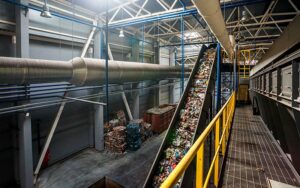The FSR Water and Waste Area is a unique environment gathering regulators, operators and academics with the goal of providing innovative thought, analysis, and discussion of EU regulatory policies and governance in the fields of water and municipal waste.
Its core research focuses on economic regulation and governance in the water and waste sectors including pricing policies and benchmarking.

This study seeks to estimate economies of scale and scope in collection, disposal, and recycling for Portuguese municipal solid waste…

This month, we will explore the fundamental transformation happening in the water supply and sanitation (WSS) sector in the context…

Water supply and sanitation (WSS) utilities face pressing water risks including too much, too little, and too polluted water, as…
Reducing carbon emission in the wastewater treatment sector requires both lower energy consumption and a transition towards renewable energy sources. Utilizing the embedded energy in wastewater, which has been traditionally…
As stated by the OECD, “water security in many regions will continue to deteriorate due to increasing water demand, water stress and water pollution.” Indeed water supply and sanitation (WSS)…

Maria Salvetti is a Part-time Professor and the Director of the FSR Water and Waste Area. She worked as a…
The school carries out multidisciplinary research with the purpose of developing economically, legally, and socially-sound regulation and policy.
Designed by an international faculty of academics and the main experts in the field, our courses are designed to meet the educational needs of professionals at all levels.
Our events bring together the world of academia and practice to offer a vast range of opportunities for open discussion and practice sharing.
This study seeks to estimate economies of scale and scope in collection, disposal, and recycling for Portuguese municipal solid waste management operators. Download the Master Thesis. Author: David Pfeffer To do so, it analyses the cost and production structure of…
Read MoreThis workshop will examine whether Italian economic regulation of water and urban waste services is making a tangible contribution to…